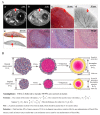A Review on Curability of Cancers: More Efforts for Novel Therapeutic Options Are Needed
- PMID: 31766180
- PMCID: PMC6896199
- DOI: 10.3390/cancers11111782
A Review on Curability of Cancers: More Efforts for Novel Therapeutic Options Are Needed
Abstract
Cancer remains a major cause of death globally. Given its relapsing and fatal features, curing cancer seems to be something hardly possible for the majority of patients. In view of the development in cancer therapies, this article summarizes currently available cancer therapeutics and cure potential by cancer type and stage at diagnosis, based on literature and database reviews. Currently common cancer therapeutics include surgery, chemotherapy, radiotherapy, targeted therapy, and immunotherapy. However, treatment with curative intent by these methods are mainly eligible for patients with localized disease or treatment-sensitive cancers and therefore their contributions to cancer curability are relatively limited. The prognosis for cancer patients varies among different cancer types with a five-year relative survival rate (RSR) of more than 80% in thyroid cancer, melanoma, breast cancer, and Hodgkin's lymphoma. The most dismal prognosis is observed in patients with small-cell lung cancer, pancreatic cancer, hepatocellular carcinoma, oesophagal cancer, acute myeloid leukemia, non-small cell lung cancer, and gastric cancer with a five-year RSR ranging between 7% and 28%. The current review is intended to provide a general view about how much we have achieved in curing cancer as regards to different therapies and cancer types. Finally, we propose a small molecule dual-targeting broad-spectrum anticancer strategy called OncoCiDia, in combination with emerging highly sensitive liquid biopsy, with theoretical curative potential for the management of solid malignancies, especially at the micro-cancer stage.
Keywords: cancer treatment; curability and cancer epidemiology; survival; theragnostics.
Conflict of interest statement
The authors declare no competing financial interests.
Figures



References
Publication types
Grants and funding
LinkOut - more resources
Full Text Sources

